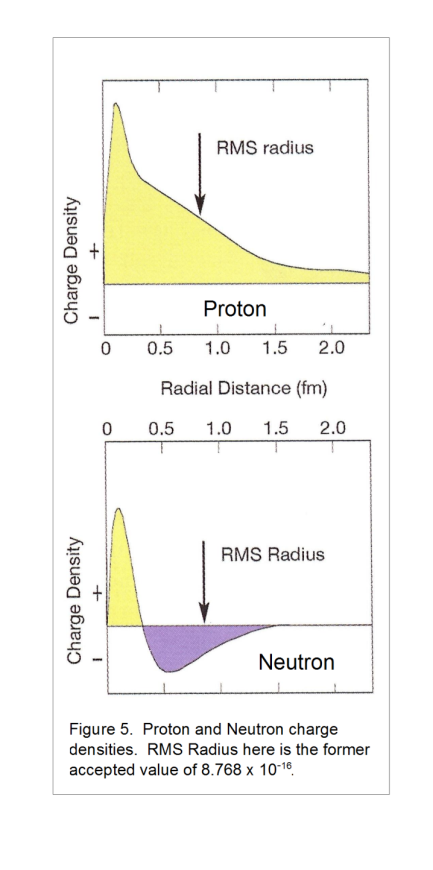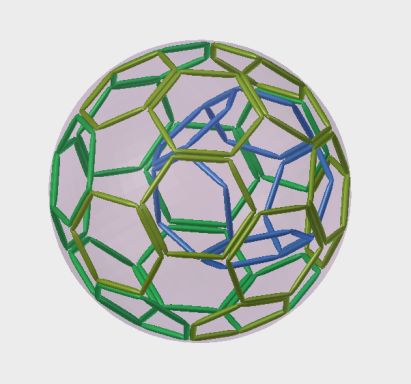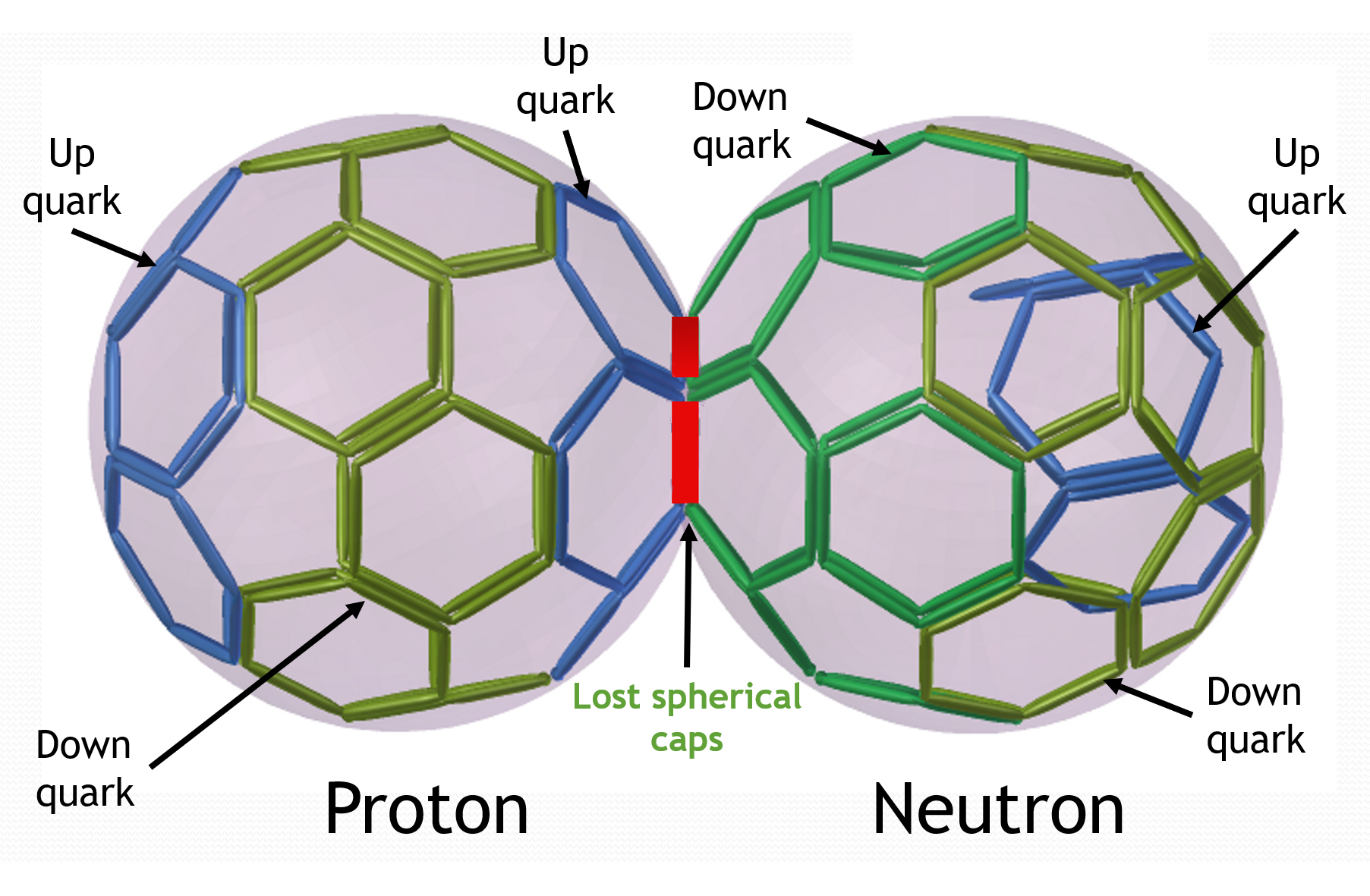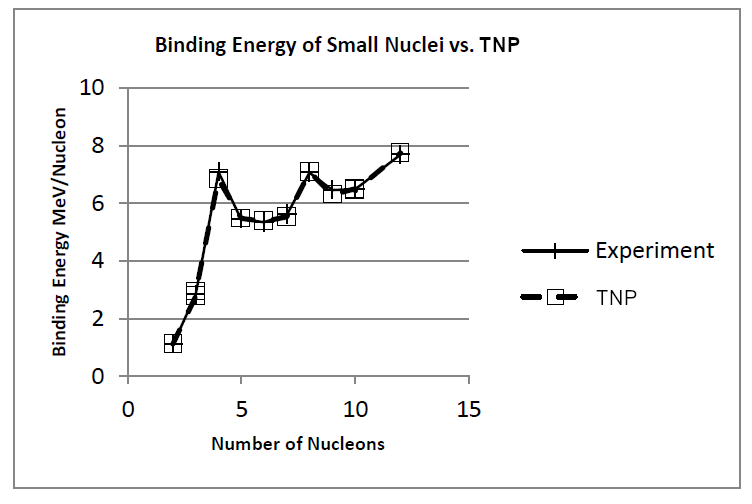There are a few more things to consider to arrive at a bracing structure for neutrons.
- A free neutron (outside the nucleus) decays in 14.75 minutes into a proton, an electron, an anti-neutrino, and energy in the form of motion of these three particles. So, the neutron is demonstrably unstable compared to the proton.
- On the other hand, within a nucleus a neutron lives just as long as a proton. There must be a reason for this.
- A neutron is composed of two down quarks and one up quark. When a free neutron decays, one of the down quarks becomes an up quark so we are left with the bracing structure of the proton.
Somehow we have to account for the instability of the free neutron as well as the Mass Defect upon fusion. We get a clue as to what might be going on here by noticing that although at a distance a neutron is neutral, in the middle it has a positive charge:

In the lower chart you can see the neutron actually has a positive charge in its center (yellow spike), which is neutralized as we get further from the center. The up quarks have a 2/3 positive charge, and the down quarks have a 1/3 negative charge. So in the proton with 2 ups and one down we have 2/3 + 2/3 -1/3 = +1 charge. In the neutron we have -1/3 -1/3 + 2/3 = 0 charge. With its positive 2/3 charge in the middle, the neutron must have its up quark in the middle. If it rattled around, it might eventually destabilize the neutron and cause its disintegration. We could hypothesize a structure like this:

With that up quark rattling around inside, it is not too surprising that a free neutron decays. But look at what happens in a nucleus:

In the Deuterium nucleus the neutron’s up quark is pinned to the right by the positive charge of the proton, so it can’t rattle around. The model accounts for why a neutron in the nucleus does not disintegrate like a free neutron does.
In summary, we have hexagonal spherical caps with one amount of mass defect, and pentagonal caps with another amount. When considering how neutrons and protons join up in a nucleus, we just have to figure out whether the join busts two pentagonal caps, or two hexagonal caps, or a pentagonal to a hexagonal cap. We then get our amazing result:

Now, the actual size of the pentagonal caps and hexagonal caps depends on one single parameter in The New Physics model: the thickness of the quark strut. Once this is set, everything else is determined. We set this in the model by calibrating it with Deuterium, using the assumption that Deuterium is formed by the busting of two pentagonal caps:

Once the quark strut thickness is calibrated, giving Deuterium the right binding energy, we get The New Physics model to match the rest of the Binding Energy data by judicious choice of busting pentagonal and/or hexagonal caps.
We belabor this point because lots of physics models have many adjustable parameters. If a model has enough parameters, you can get it to match any data. The New Physics model of fusion has just one adjustable parameter.